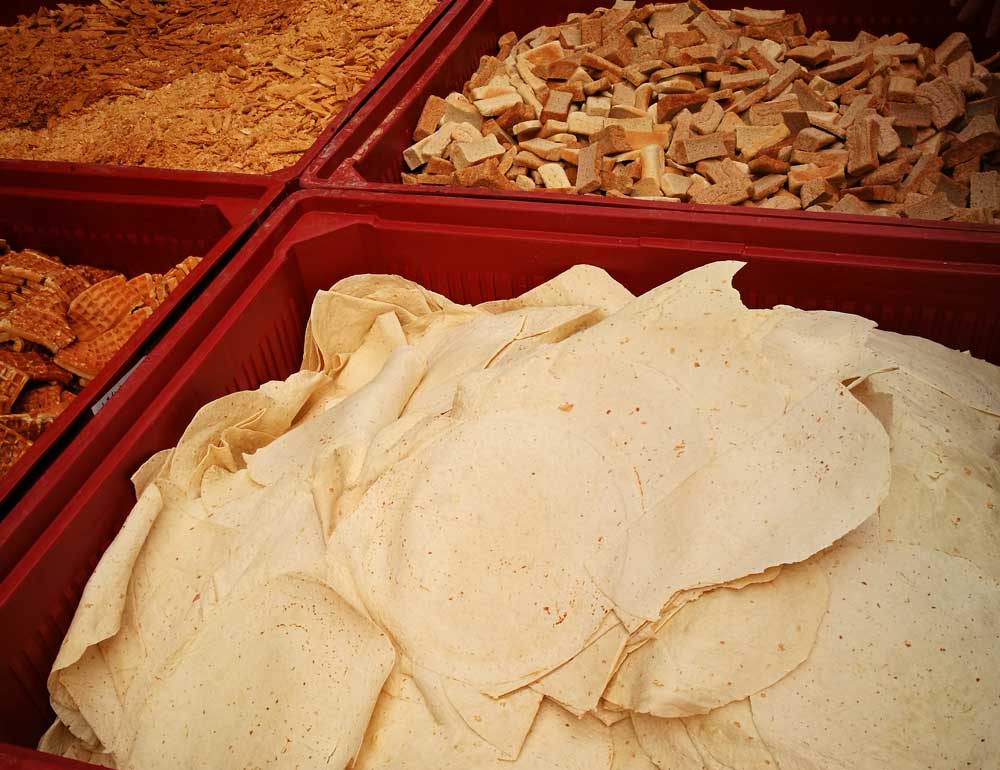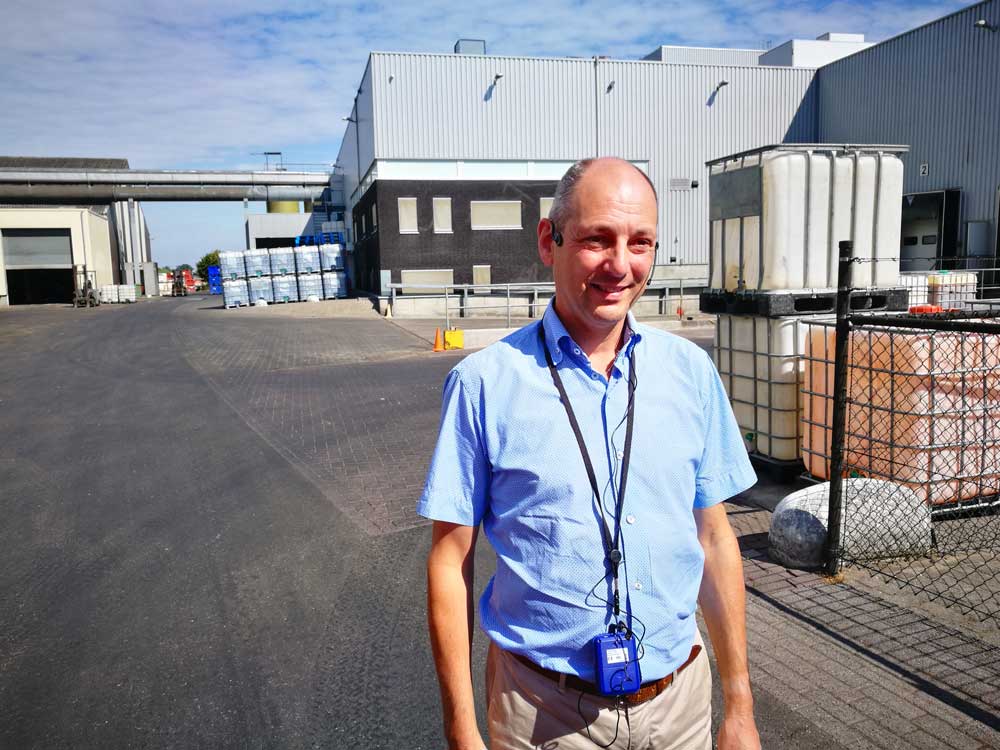Food to feed: Reducing farming’s carbon footprint
By Norman Dunn
Is there a future for top agricultural efficiency without reliance on increased scale or even more mechanisation? A group of specialists in the Netherlands are proving this is entirely possible in the livestock sector. The family-owned feed mill Nijsen-Granico and the newly established egg production company Kipster, both based in the southern province of Limburg, have got together with university researchers, computer specialists, environmentalists, feed experts, animal welfare groups and other farmers. The aim: profitable farming with the emphasis on sustainability. A major factor in this strategy is the processing into quality feed of rejected food products, from bread to chocolate bars, from waffles to Easter eggs. These nutritionally valuable products can be thus recycled to produce more food. In this way, cereal input for feed production is reduced. Less farmland is needed for growing feed. First results show that farming’s carbon footprint can be reduced by 65 % to 70 % by following this route.
Join us on a drive into the southern Netherlands. On the outskirts of Venray town, there’s a neat family-owned feed mill with its cluster of silos nestling between tree-lined fields. This is the 115-employee Nijsen-Granico plant, relatively small in terms of business size, but very big in innovation. It was here almost 30 years ago now that the idea of replacing feed grain in livestock rations with rejected food products first took root.
230 food suppliers
Let’s hear the background from managing director John Geurts: »Nowadays, this rejected material includes dough, bread, biscuits, cakes and confectionary from some 70 bakeries and a total of 230 suppliers, 50 % of our shipments coming from the Netherlands and the rest from all over Europe. One bakery alone delivers up to 10,000 t of unwanted, but otherwise highest quality, dough in a single year«.
Rejected foodstuffs entering the animal feed chain in this way are subject to strict quality standards., point out the representative organisation for this sector, the European Former Foodstuff Processors Association (EFFPA). For example, a biscuit dropping of a conveyor at the bakery and landing on the floor is "waste material" that may not be consigned to feed for animals. Food products considered suitable for feed are only those that do not meet commercial standards through manufacturing or packaging errors. For instance, tortilla wraps that are just a little too brown for perceived consumer wishes, pizzas with toppings of the wrong colour, chocolate biscuits that may have been broken or wrapped in the wrong packaging. Other obvious candidates include out-of-season food products, Christmas cakes or Easter eggs, for example. The list of rejects is long; every extra item a reflection on the required perfectionism in modern food marketing.
No catering waste is allowed into animal feed. As for animal by-products, only rejected foodstuffs containing, or processed from, milk, eggs, honey and porcine gelatine are allowed.
Smaller carbon footprint
This substantial scale of food rejection sparked-off Nijsen-Granico’s sustainability concept. Clear from the start was that all these rejects – after processing, drying and pelleting to make a nutritionally uniform feed ingredient – provided ideal ingredients for feed. »After all«, points out John Geurts, »not only is food-grade grain of highest quality, so are the fats used in foods. And a good range of sugars is also available. Replacing feed cereals in the rations with this material frees-up fertile farmland for growing more human food. It is calculated that this food-for-feed solution can reduce the carbon footprint of pig and poultry farming by as much as 65 %.«
Also produced by Nijsen-Granico are food-based liquid feeds including a “bread melange” for pigs. Some 95,000 t of this product is delivered to farms each year by the mill’s own fleet of tankers. Other related products: a supplemental drink for boosting intake of suckling pigs and an energy lick for cattle.
Currently, EU compound feed production runs at around 160 m t annually and this includes some 43 m t of mostly imported ingredients such as high protein soymeal from across the Atlantic. Germany feeds some 24 m t of compound rations each year and the Netherlands about 14.5 m t. Traditional pig and poultry feed comprises 60 - 70 % cereals.
Nijsen-Granico increasingly replaces some of this cereal content in its livestock feed products. The company is also considering new concepts that could see cereals in compounds being completely replaced by processed food products. It is also investigating ways to source all co-products and oil meal from Europe. For instance, soybean protein could be partly replaced by home grown soybeans or other European products. One high-protein source discussed is, for instance, dried juice from grass. Other protein-rich feed ingredients being considered: insects, algae and bacteria.
In Europe, food products redirected into livestock feed already replace grain that would need between 350,000 and 400,000 ha of good farmland. The EFFPA estimates that continuing innovation in food processing, and the demands of ever-changing consumer requirements, mean that the amount of food products diverted into livestock feed could double by 2025.
Comprehensive quality chain
John Geurts tells us that businesses like his are now in the midst of a revolution. »Gone are the days when each player in the food production chain could concentrate on its own little island, the produce of the single business. We are all much more directly involved now: farmers, geneticists, feed producers, food processors, animal welfare experts, retailers too, in creating the end product for retailers' shelves. I would say that in just five years‘ time we at Nijsen-Granico will no longer be saying we produce simply feeds. We will be emphasising, instead, that we help produce quality end products, such as eggs or a type of chicken meat.«
That this approach has already left the starting blocks can be seen from the following report on Kipster egg and chicken meat production at Castenray, a unit for 24,000 birds just started in 2017 and already being described as "the most animal-friendly and environmentally-conscious poultry farm in the world".
See also: Eggs from high welfare layers sold-out every day
www.dlg.org/en/agriculture/topics/dlg-agrifuture-magazine/knowledge-skills/kipsters/





